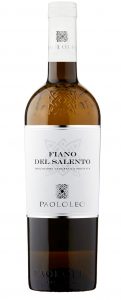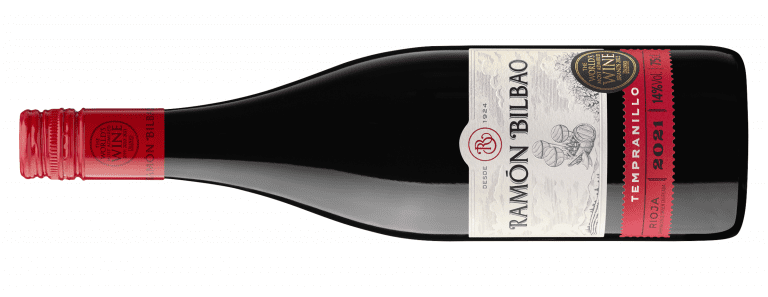Interesting illustrations today of the evolving nature of the wine world.
Not so long ago, the focus for Italian whites would have been trebbiano, garganega or verdicchio.
Now a range of varieties have been revived and are producing great options.
Pecorino and falanghina are good examples but so, too, is today’s choice, fiano.
Similarly, Rioja would once have been all about complex, oak aged reds with firm tannin.
Now updated styles from its producers offer wine drinkers impressive but diverse options.
Examples of both “modern” developments are highlighted in this post.
Once again, pictures and hyperlinks are included where possible to make it easier to track down the wine in question.
First the revived fiano grape
2022 Paolo Leo Fiano del Salento (£7.99 – instead of £10.99 until 21 May – at Waitrose and 12.5% abv):

Intense grapefruit, cooked pear and honeydew melon flavours all come together harmoniously in this stylish white from Southern Italy.
Fiano does especially well thereabouts, and the current £3 discount is a great opportunity to give it a “taste drive”.
Experience, then, how the flavour elements already mentioned integrate splendidly with this wine’s yeasty richness and bright lemon acidity.
Then a modern trend in Spain
2022 Ramon Bilbao Tempranillo (£7.75 – instead of £8.75 until 20 May with a Tesco Clubcard and 14%):

Few producers capture the essence of cutting edge Rioja better than Ramon Bilbao with his admirable ability to create young, light and easy drinking wines.
Medium bodied and gentle, this example centres around attractive strawberry, bramble and red cherry flavours.
Those are partnered here by liquorice and vanilla constituents and bright acidity – all skilfully smoothed out by the perfectly judged use of oak.
Join me again on Thursday when I focus on the relaunched Definition wine range at Majestic.









12 responses
Hi Brian,
Would it not be correct in saying that the specific Fiano you are writing about is from Salento in Puglia on the Adriatic coast, not Fiano from Campania on the other side near Naples and the Amalfi coast.
Enjoying your recommendations immensely.
Regards
Nick
You are quite right, Nick -thank you for pointing it out. All ambiguity has now been removed (I hope). Apologies for any confusion caused.
You beat me to it Nick. Paolo Leo is a big producer of wines in Donaci, NW of the lovely city of Lecce and Salento is a broad IGP for wines produced in the heal of Italy. I too associate Fiano more with Campania but, not least on the evidence here, it is planted in Puglia too. When I’ve been in the region it has largely been Verdeca that is the default white in the local bars.
Of course, it is worth pointing out that the splendid Paolo Leo Primitivo di Manduria is also discounted from £12.99 to £9.99 in Waitrose until 2i May too.
Hi Brian, I, too, am a fan of the Paolo Leo Fiano del Salento – indeed I served it as the first course wine at our last NYE dinner. “More Fiano, Fiona” has become the village joke – although it was appreciated by everyone else, as well!
MidWeekers may find that the 2023 is the current vintage in store. I have drunk both years, although not side by side, and was equally happy with the 2023.
Hello Richard,Having just come back from Lecce, I can confirm that the area is great for Fiano.At the first first serving,I thought that I had ordered orange wine by mistake ,as the Fiano was the deepest yellow I have ever seen.Complex and multi layered.Just brilliant.I did mention the winery in an early post.
However the best wine of the whole holiday was in Matera.The very entertaining wine waiter insisted on me not ordering any Puglian wine ,but I should only drink Basilicata wine called Gesualdo which is a very modern version of an ancient grape- Agliancio del Vulture from Cantina di Venosa.A velvet red wine,soft tannins and sumptuous flavours.Best Italian red I have tasted this year.
He jokingly dragged off the wife into the kitchen to do the washing up ,as he said I had not paid for the wine.!That’s Italy -passionate about food and wine and proud of their history and produce.And the weather is lovely.
As I currently am enjoying the Asda Finest Gavi Brian, you well understand my usual interest in all things wine is one of evocation! That said your reference today to the Italian bottle above made me think that out of all the near Euro locations it is Italy that has the variety like no other country with both its reds and whites.
The number of different varieties from top to toe is incredible. For me as much as I enjoy both France and Portugal especially, it has always been Italy where my best experiences have been felt.
Unusual it would be as an individual to know every single location in a country so large for recalling every bottle ever drunk while being there, nevertheless today’s travellers do get around a bit and the likes of specifics including for instance Vernaccia di San Gimignano, Asti Spumante, Soave or Verdicchio dei Castelli di Jesi can address the powers of recall and the pure enjoyment of remembering having drunk them in situ.
So my only regret is that even though I remember very well years ago being in Casale Monferatto, a small hillltop town in the Piedmont north of Alessandria, having a meal in a family home, the white wine offered was in an unlabled bottle and I never knew what was the grape involved. I do recall it was just about the nicest, most fragrant white wine I’d ever drunk up to that point and that experience has always stuck with me. Whether it was Arneis or Cortese or whatever I will never know save to say that Italy and its bianco scored again. Locally made for the locals that one, never produced to travel far!
I’ll be staying near a Waitrose in a couple of months time so will try the Fiano then.
Puglia- the heel of Italy- is also known as Apulia.The word is a mix of Greek and Latin , A pluva, which means” No water”.Any rain just disappears into the porous limestone, hence no rivers and dry valleys.However the grapes grow deep roots so no shortage of wines!
Nice story, Paul.
It is great when a shared love of food and wine leads to such good experiences.
I remember staying in a business focussed hotel in Alicante, and looking for somewhere for dinner. An Italian restaurant just around the corner was very convenient but the Trip Advisor reviews were decidedly mixed. Many found the Sicilian owner/front of house overbearing and opinionated, but many had a great experience. We booked a table. Our strategy was to cooperate with the owner to reach the “correct” menu choices. And then my master stroke would be to ask him to select a really good Sicilian Red for us. It was the most wonderful evening, and the owner gave me a huge man hug as we left! I guess the secret for dining in such places is to assume that they know their food and wine better than you do. So have the attitude that you are lucky to be his guest, rather than that of “The customer is King”.
Is Fiona married to “More Rioja Roger”?
Something of a challenge to have tried all the Italian grape varieties. The Wikipedia list needs 12 “page downs” to complete and even that is unlikely to be complete.
Hello Brian,I did promise to report back on two Co,-op wines that featured in an online Rioja presentation by Bodegas Muriel and Sarah Benson,Co-op wine buyer.It is good to see that the 26 year old relationship is thriving and these are two entry level,affordable and accessible wines
Co-op Irresistible Vina Gala Rioja Crianza 13.5% £8.
Baked cherries,blackberry and sweet spices,soft tannins and smooth finish.This medium bodied 100% Tempranillo has all the components of a good Rioja but emphasizes freshness and fruitiness.Vino con Crianza means oak aged,one year in oak barrels and one in the bottle before release.
Co-op Irresistible Vina Gala Rioja Blanco 12.5% £7.50
This is a world away from traditional Rioja Blanco which tends to be quite weighty and rather woody- a Marmite kind of wine.This one is light,crisp and the 91% Viura gives it a honeysuckle and peach feel whereas the ( rare) 9% Tempranillo Blanco gives it fresh citrusy notes with a bit of welly.This one is more commercial- but in a good way.
Good point about white rioja. Things have indeed improved significantly in recent years and there are some impressive versions about with – as you say – this being one of them. Thanks for the report on that event. It is good to see Co-op initiating activities like that especially as they have a really good buying team to make it work well.